Abstract
1. In normal human subjects, the afferent activity from muscle spindle endings in the pretibial muscles was recorded while a pressure block was applied to the peroneal nerve proximally in the popliteal fossa. 2. In five of ten blocks, spindle activity increased in attempted isometric voluntary contractions when the receptor-bearing muscles were completely paralysed. In the remaining five blocks, voluntary effort still increased spindle activity when maximum voluntary power was reduced by more than 90%, but the ability to activate spindles voluntarily was lost with or slightly before block of the last motor units. When the ability to activate spindle endings in an attempted voluntary contraction was lost sympathetic efferent fibres remained unblocked. 3. It is concluded that the fusimotor effects seen during a voluntary contraction are mediated by myelinated fibres of small calibre which probably innervate intrafusal structures exclusively (gamma fusimotor fibres). There is no necessity to postulate that skeleto-fusimotor (beta) fibres are responsible for the tight 'alpha-gamma co-activation' seen in man during voluntary contractions.
Full text
PDF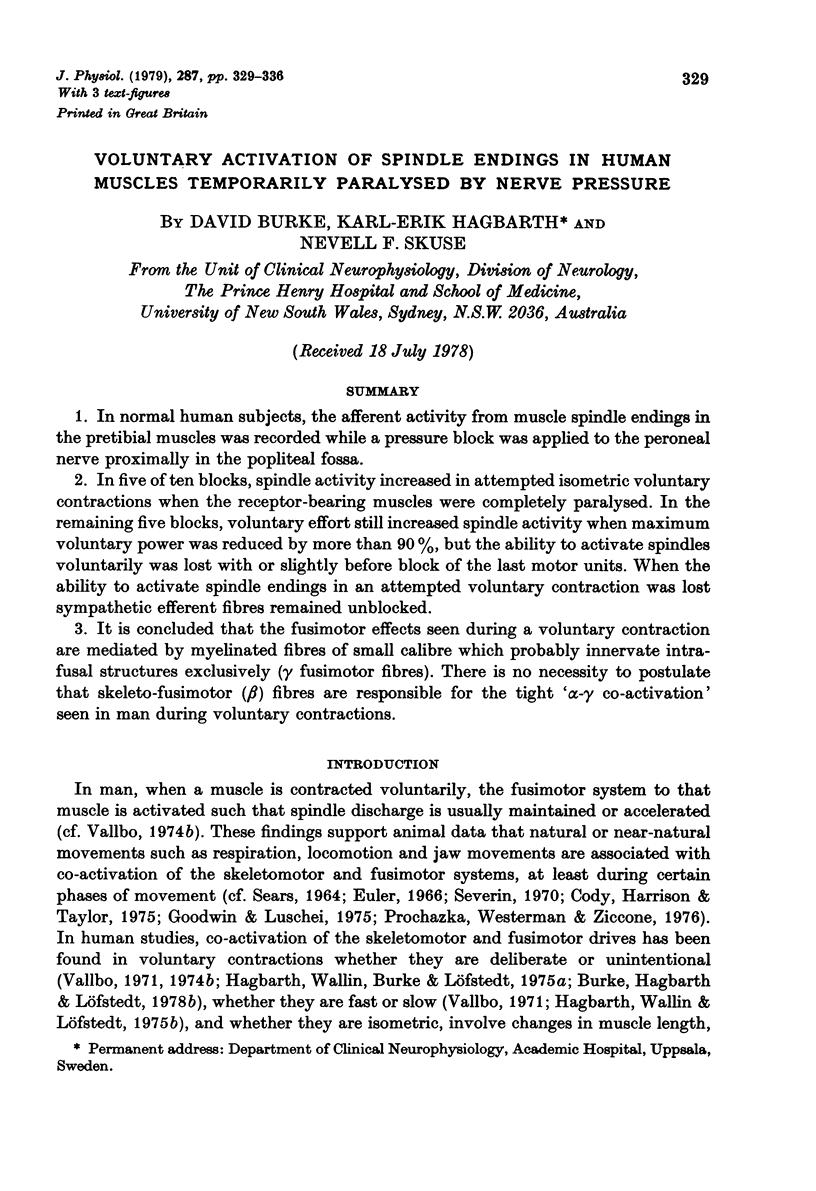
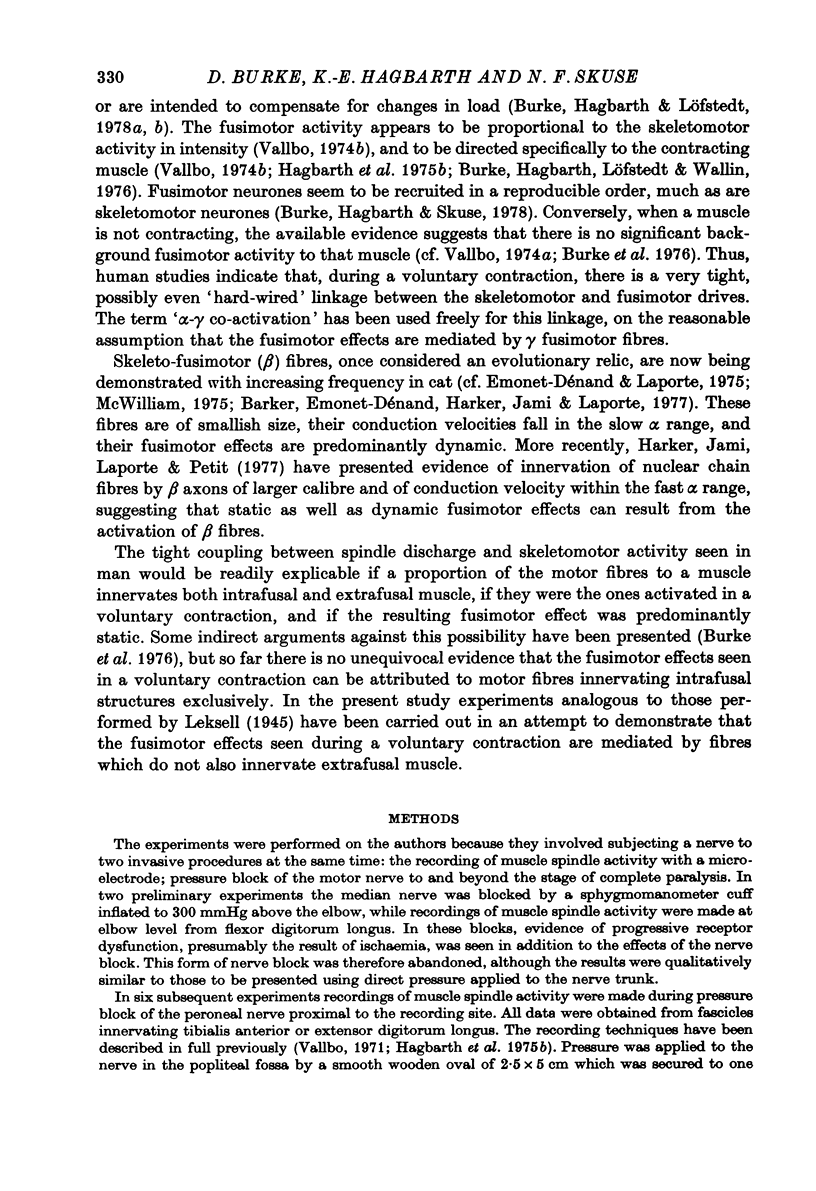
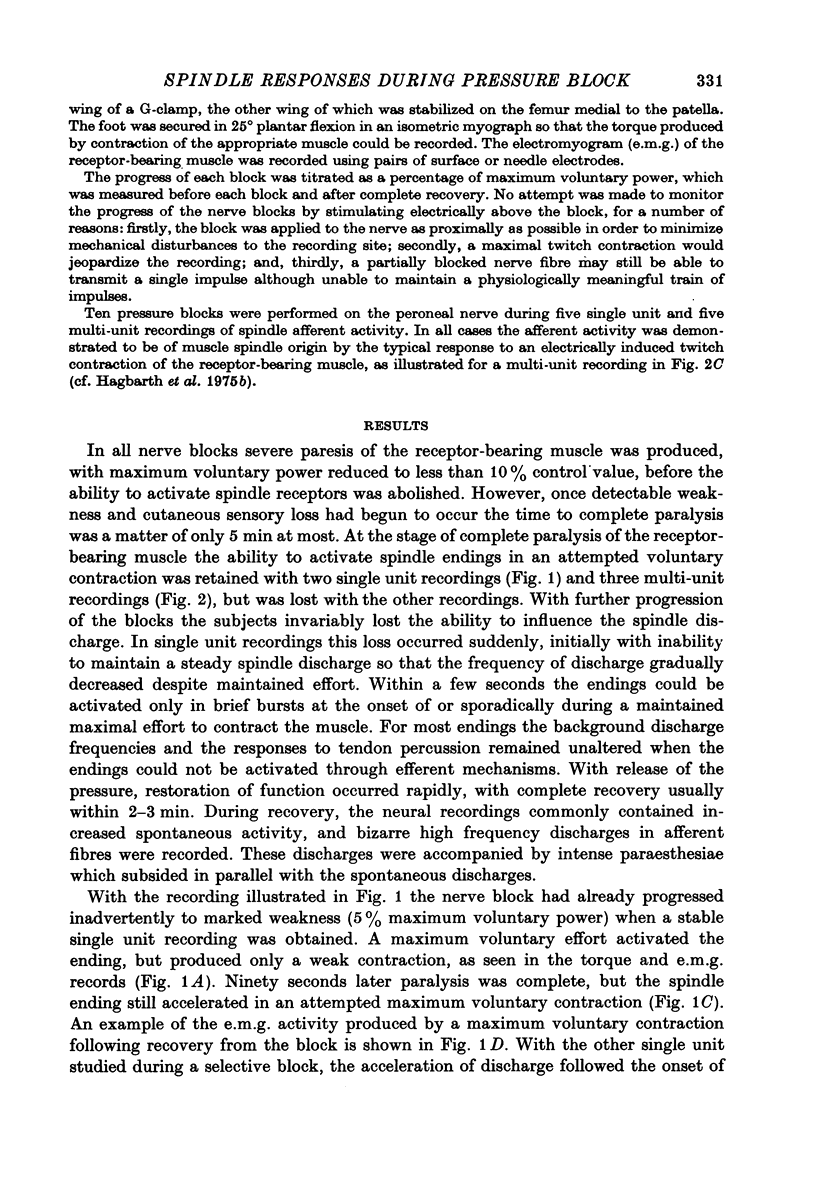
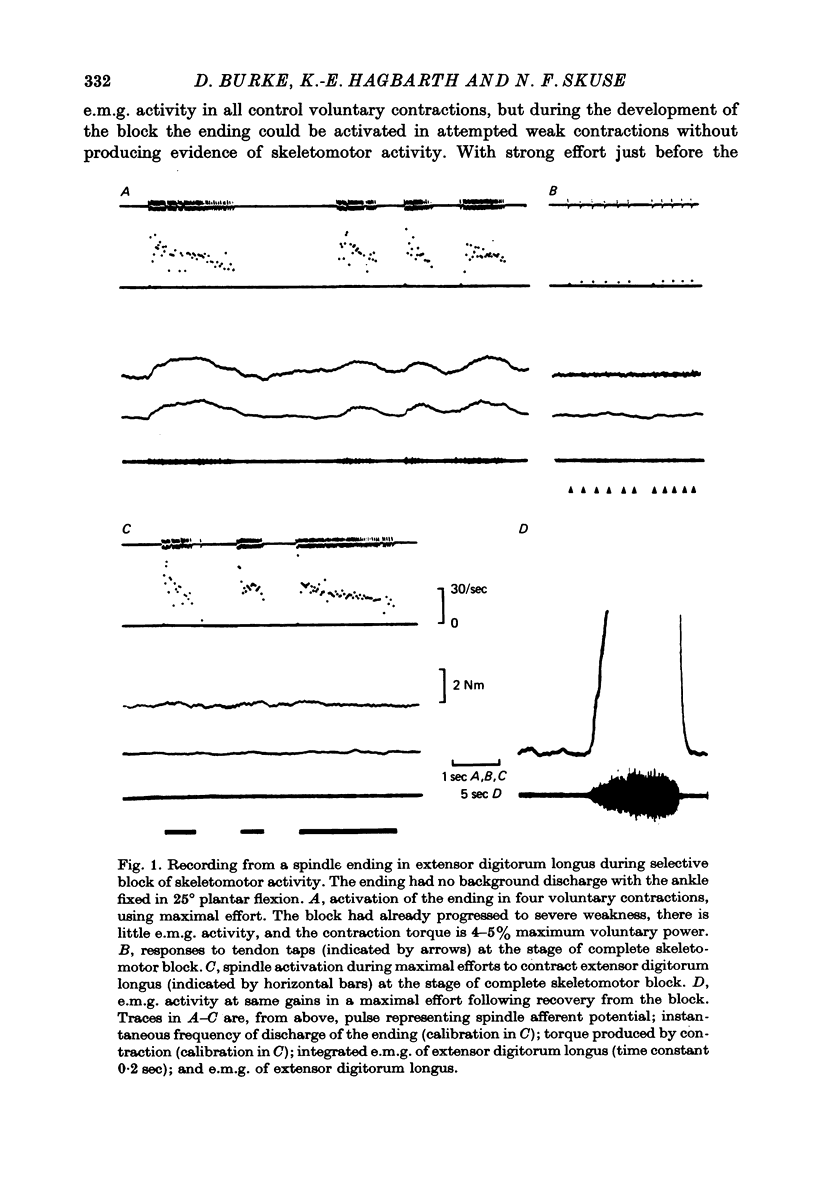
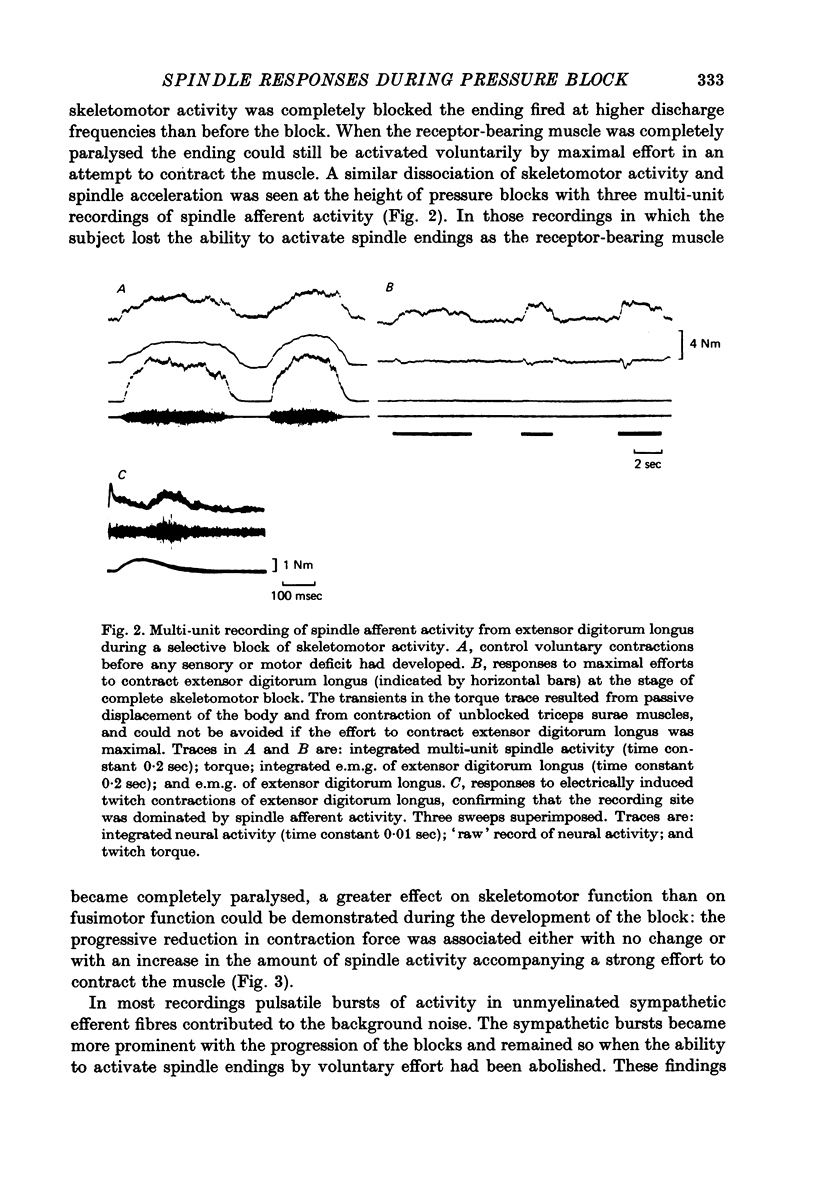
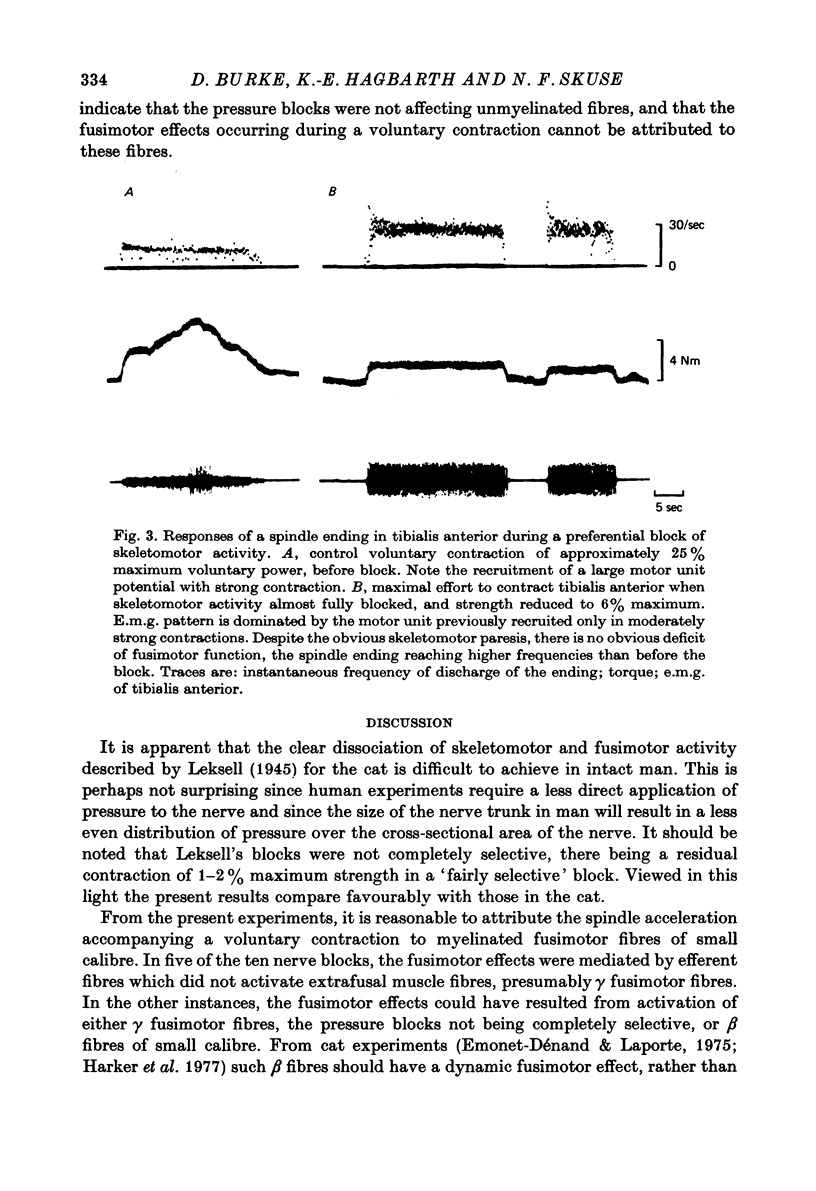
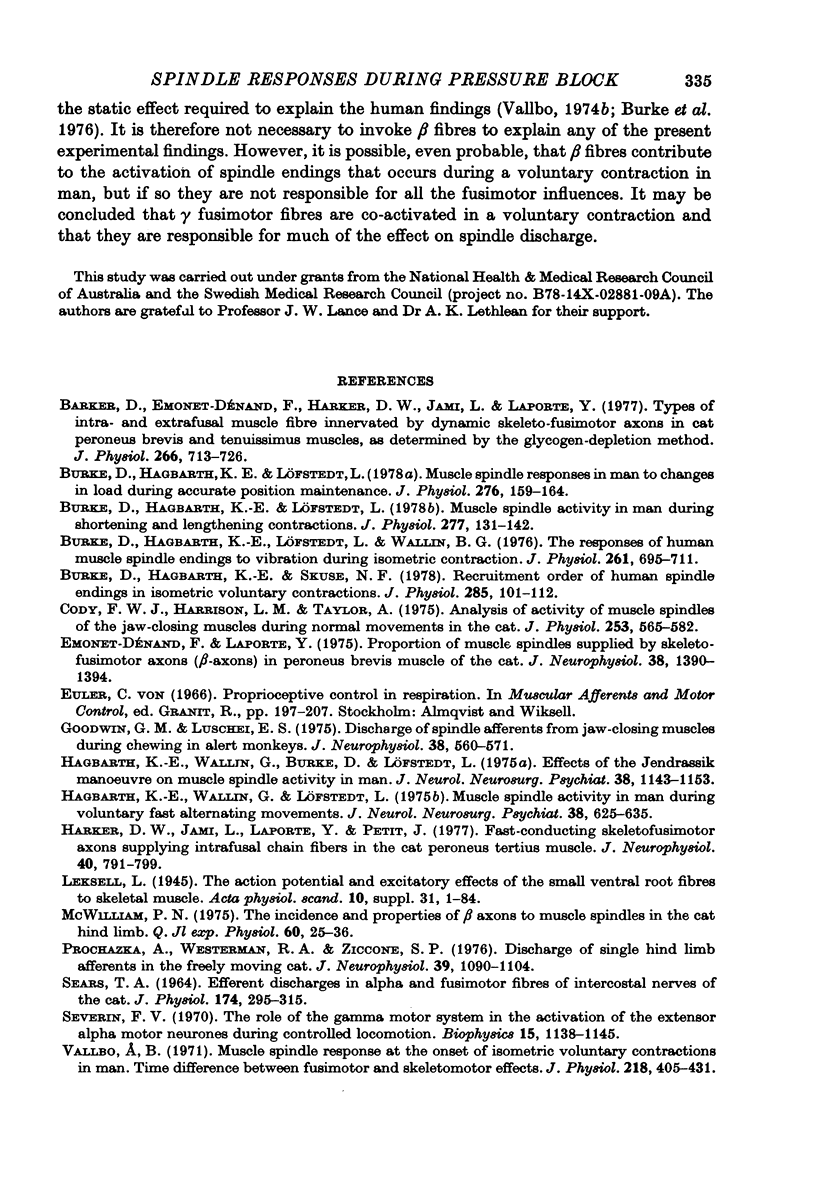
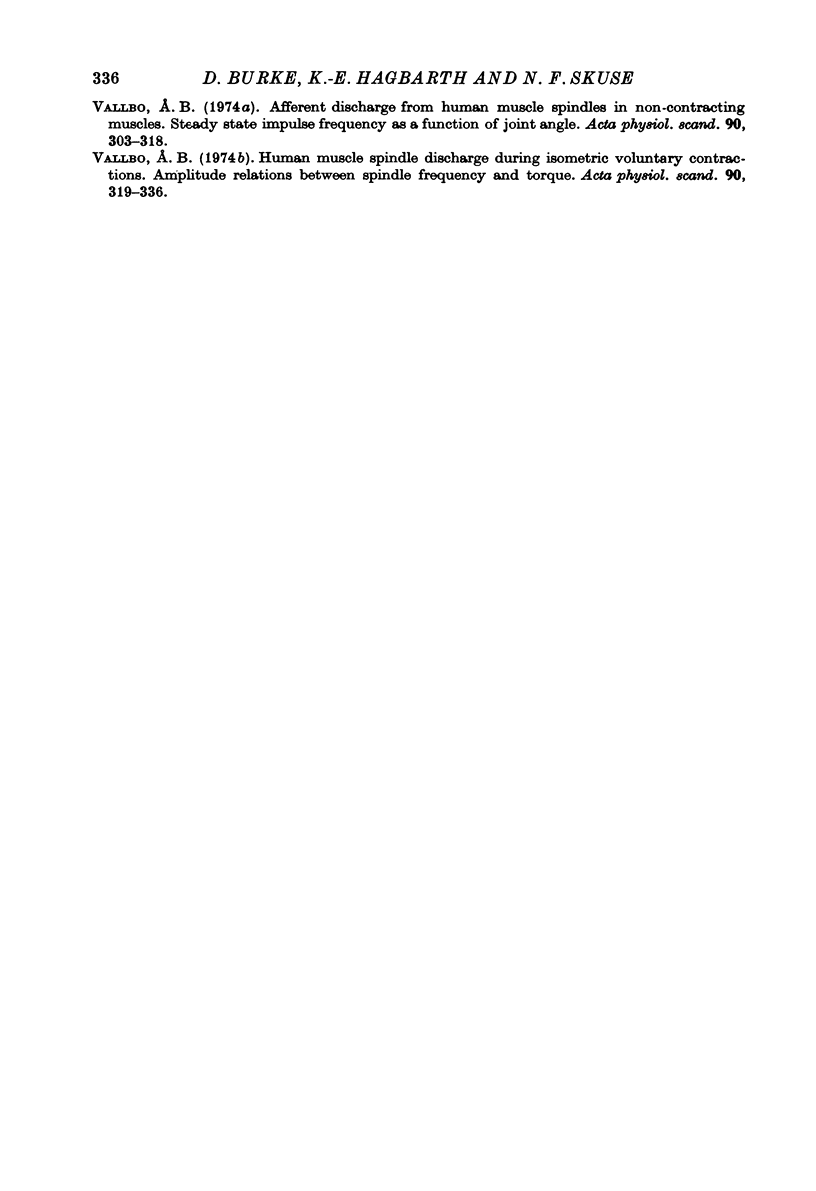
Selected References
These references are in PubMed. This may not be the complete list of references from this article.
- Barker D., Emonet-Dénand F., Harker D. W., Jami L., Laporte Y. Types of intra- and extrafusal muscle fibre innervated by dynamic skeleto-fusimotor axons in cat peroneus brevis and tenuissimus muscles, as determined by the glycogen-depletion method. J Physiol. 1977 Apr;266(3):713–726. doi: 10.1113/jphysiol.1977.sp011789. [DOI] [PMC free article] [PubMed] [Google Scholar]
- Burke D., Hagbarth K. E., Löfstedt L. Muscle spindle activity in man during shortening and lengthening contractions. J Physiol. 1978 Apr;277:131–142. doi: 10.1113/jphysiol.1978.sp012265. [DOI] [PMC free article] [PubMed] [Google Scholar]
- Burke D., Hagbarth K. E., Löfstedt L. Muscle spindle responses in man to changes in load during accurate position maintenance. J Physiol. 1978 Mar;276:159–164. doi: 10.1113/jphysiol.1978.sp012225. [DOI] [PMC free article] [PubMed] [Google Scholar]
- Burke D., Hagbarth K. E., Löfstedt L., Wallin B. G. The responses of human muscle spindle endings to vibration during isometric contraction. J Physiol. 1976 Oct;261(3):695–711. doi: 10.1113/jphysiol.1976.sp011581. [DOI] [PMC free article] [PubMed] [Google Scholar]
- Burke D., Hagbarth K. E., Skuse N. F. Recruitment order of human spindle endings in isometric voluntary contractions. J Physiol. 1978 Dec;285:101–112. doi: 10.1113/jphysiol.1978.sp012560. [DOI] [PMC free article] [PubMed] [Google Scholar]
- Cody F. W., Harrison L. M., Taylor A. Analysis of activity of muscle spindles of the jaw-closing muscles during normal movements in the cat. J Physiol. 1975 Dec;253(2):565–582. doi: 10.1113/jphysiol.1975.sp011207. [DOI] [PMC free article] [PubMed] [Google Scholar]
- Emonet-Dénand F., Laporte Y. Proportion of muscles spindles supplied by skeletofusimotor axons (beta-axons) in peroneus brevis muscle of the cat. J Neurophysiol. 1975 Nov;38(6):1390–1394. doi: 10.1152/jn.1975.38.6.1390. [DOI] [PubMed] [Google Scholar]
- Goodwin G. M., Luschei E. S. Discharge of spindle afferents from jaw-closing muscles during chewing in alert monkeys. J Neurophysiol. 1975 May;38(3):560–571. doi: 10.1152/jn.1975.38.3.560. [DOI] [PubMed] [Google Scholar]
- Hagbarth K. E., Wallen G., Löfstedt L. Muscle spindle activity in man during voluntary fast alternating movements. J Neurol Neurosurg Psychiatry. 1975 Jul;38(7):625–635. doi: 10.1136/jnnp.38.7.625. [DOI] [PMC free article] [PubMed] [Google Scholar]
- Hagbarth K. E., Wallin G., Burke D., Löfstedt L. Effects of the Jendrassik manoeuvre on muscle spindle activity in man. J Neurol Neurosurg Psychiatry. 1975 Dec;38(12):1143–1153. doi: 10.1136/jnnp.38.12.1143. [DOI] [PMC free article] [PubMed] [Google Scholar]
- Harker D. W., Jami L., Laporte Y., Petit J. Fast-conducting skeletofusimotor axons supplying intrafusal chain fibers in the cat peroneus tertius muscle. J Neurophysiol. 1977 Jul;40(4):791–799. doi: 10.1152/jn.1977.40.4.791. [DOI] [PubMed] [Google Scholar]
- Prochazka A., Westerman R. A., Ziccone S. P. Discharges of single hindlimb afferents in the freely moving cat. J Neurophysiol. 1976 Sep;39(5):1090–1104. doi: 10.1152/jn.1976.39.5.1090. [DOI] [PubMed] [Google Scholar]
- SEARS T. A. EFFERENT DISCHARGES IN ALPHA AND FUSIMOTOR FIBRES OF INTERCOSTAL NERVES OF THE CAT. J Physiol. 1964 Nov;174:295–315. doi: 10.1113/jphysiol.1964.sp007488. [DOI] [PMC free article] [PubMed] [Google Scholar]
- Vallbo A. B. Muscle spindle response at the onset of isometric voluntary contractions in man. Time difference between fusimotor and skeletomotor effects. J Physiol. 1971 Oct;218(2):405–431. doi: 10.1113/jphysiol.1971.sp009625. [DOI] [PMC free article] [PubMed] [Google Scholar]


